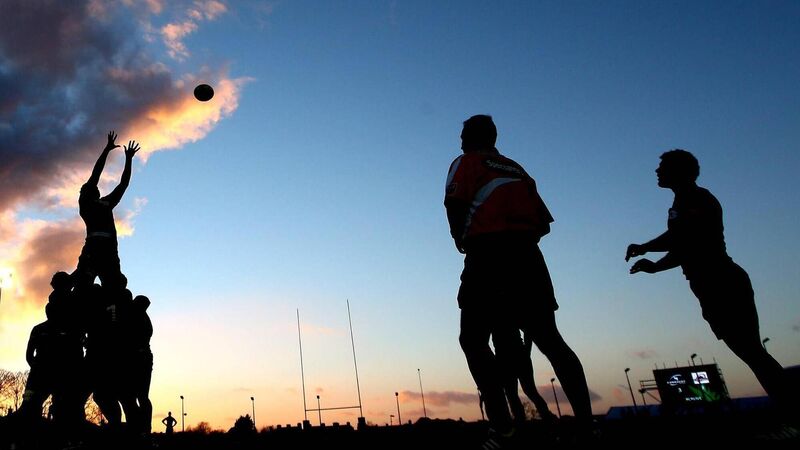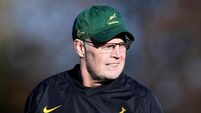Michael Moynihan: Looking for the pattern behind the play

Public schoolboys playing rugby in the 19th century tended to be five inches taller than non-public school opponents because of advantages in nutrition and healthcare
Can you hear that? Are you sure they’re listening?
Apologies for the paranoia. For the last few nights, I’ve been watching Adam Curtis’s documentary series Can’t Get You Out Of My Head, which is bad enough if you’re easily unsettled. I’ve compounded the experience, though, by reading Evil Geniuses: The Unmaking of America by Kurt Andersen as I’m going along.
Not good for the part of your brain tasked with worrying about What It All Means, but both of them are provocative experiences (and hugely entertaining, it must be said).
One of the key elements at the core of both projects is an acknowledgement of how difficult it is to discern pattern and intent over a long period of time — and doubly difficult when those patterns and intentions are being being hidden on purpose.
This is true in every aspect of life, of course, sport is no exception. Change is necessarily hard to track in an endeavour where one of the defining characteristics is a closed time period in which everything happens: 60 minutes, 70, 80, 90. A season. Twenty seconds. Half-time. Extra time.
The primacy of that sharply-defined, limited stretch of time militates against the long view, obviously enough. You can even hear it from the participants, in every interview which reheats the old cliche about victories and medals being appraised at the end of one’s career rather than now, or the coach who says that this week or tomorrow or tonight is all they’re thinking of, or the perennial injunction to players and athletes of all stripes to focus on the next ball, the next play, the next clash ...
Sport’s immediacy is one of its attractions, but it means discerning the long-term pattern is all the harder. Credit here to the inter-county manager who, when asked whether he would start freshening up his ageing side.
“No,” he said. “That’s for the next man.”
A clear indication of values in a pursuit which has no tomorrows: just the next hour and a half.
Take a step back, though, and the long view shows up trends that illuminate the present as much as they indicate the future.
Every sport’s changing profile over the years yields fascinating data. Sift through information about scoring rates (hurling), player size (rugby), demographics (Gaelic football), and participation rates (women’s sport), and an entirely different perspective leaps out.
To take a random example, one of my favourite chats in the last few years was a conversation with the sports historian Tony Collins about his social history of rugby in England. Collins’s book is hugely entertaining — it’s where I learned that public schoolboys playing rugby in the 19th century tended to be five inches taller than non-public school opponents because of advantages in nutrition and healthcare.
That’s just the spark to kindle a pub conversation, though. Collins was also informative on less obvious trends, like long-term social and economic pressures which led to the rift between rugby union and league.
Readers may be aware of the famous meeting at the George Hotel in Huddersfield in 1895 which formalised that division, but that was the flashpoint which stands in for a far longer off-stage drift — one which would have been far harder to discern in real time.
The same applies to all sports. The slow turn of obscure events and decisions breaks through the surface every now and again, and Adam Curtis is good on how to try to puzzle your way beyond that surface (you’ll probably get a mild migraine following his interpretation of apparent coincidences but you’ll enjoy hearing phrases like ‘in fact, it had the opposite effect’).
All of which brings us back to where we started, and the need to try, at least, to be aware of such long-term trends.
If they exist, that is.
Last week I referred here to the sudden closure of Football Index, a betting firm/website linked, according to one report, to “unparalleled levels of irresponsible gambling behaviour from 10,000s of users misled . . . ” look, you know the rest. Or can guess it.
Predictably, I got a couple of messages asking if I was any fun whatsoever (I like to think so), or whether I was too tight to risk any money in a wager myself (hm, closer to the bone).
Just as an aside, I don’t begrudge anyone their right to do as they see fit, gambling included. What surprises me is the wilful ignorance about the companies which facilitate that gambling.
A customer of Sky Bet told the New York Times last week, for instance, that a lawyer he’d engaged discovered that Sky Bet “or one of the data providers it had hired to collect information about users, had access to banking records, mortgage details, location coordinates, and an intimate portrait of his (the customer’s) habits wagering on slots and soccer matches.
“After he stopped gambling, Sky Bet’s data-profiling software labeled him a customer to ‘win back.’ He received emails like one promoting a chance to win more than $40,000 (approx. €34,000) by playing slots, after marketing software flagged that he was likely to open them. A predictive model even estimated how much he would be worth if he started gambling again: about $1,500 (approx. €1,270).”
That’s what you’re dealing with.
That’s how they see you.
Great to hear from former Cork star Colm O’Neill out in the States during the week. I’ll definitely make it out to Colorado at some stage when the lockdown ends.
In the meantime can I enlist the help of readers for a query from the Midleton native?
Some of his clubmates are gathering information about the Midleton team that won the football side of the first Double back in 1890.
They’ve run into a dead end on the captain, however. This was Jim Power, originally from Shanballymore, who had a drapery shop in Winthrop Street in Cork later in life.
Details about Power are very thin on the ground, however, and even his burial place is a mystery, so any information would be welcome.
As Colm pointed out, captaining Cork to a football All-Ireland puts Power in a pretty select group. It would be good if he were remembered. If you have any info, use the email address elsewhere on this page.
When it comes to change which is incremental but wide-ranging, as mentioned above, consider the introduction of a device which, when used casually by men and women in their spare time, ensured the gene pool would be widened.
The device I refer to is of course the bicycle. Mobilising people in the late 19th century was a revolutionary development, because it immediately widened the social circle of everyone who hopped on a saddle, but was particularly powerful in empowering women.
This is just one of the points raised in a new book - Revolutions: How Women Changed the World on Two Wheels by Hannah Ross.
Anyone who reads this column regularly knows anything which identifies a off-stage drivers of social change in a historical context will tickle my funny bone (see elsewhere on this page, for instance). Not to mention a book which clearly has a good story to tell.
More on this as and when I get a copy.









